If raising backyard chickens at home has piqued your interest, you’ve probably got unanswered questions. This is one of those great outdoor hobbies that can not only provide nutritional benefits but really open the door to sustainable living.
Keeping your own flock is a rewarding activity. Chicks don’t just produce the freshest eggs, they offer endless entertainment, insect control, and fertilizer.
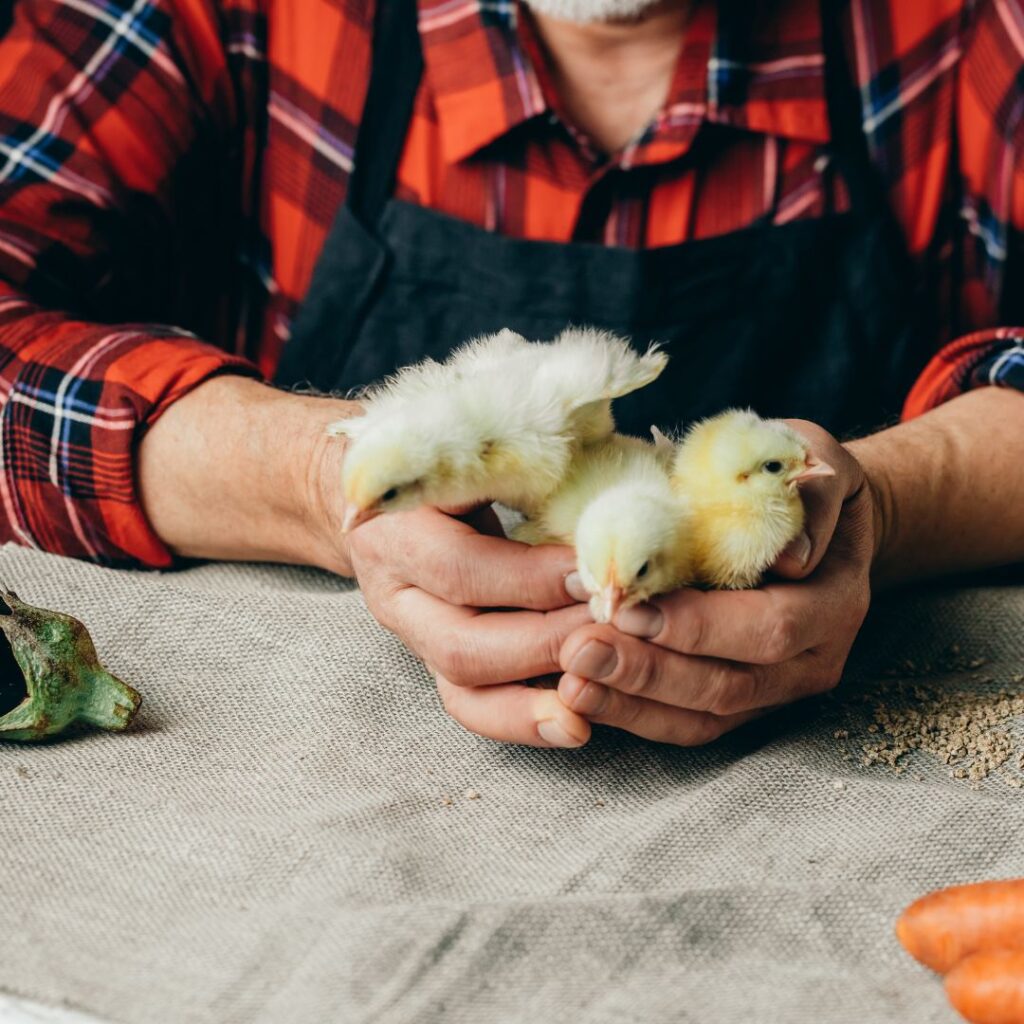
Beginners will learn how to raise backyard chickens, including tips for selecting the right breed, housing, feeding, and caring for your birds all right here.
Tips On Raising Chickens for Newbies
You might be wondering if backyard chickens are the right pet for you. Our research and personal experience found that raising chickens is a lot easier than most people realize. But first, there are a few things beginners should consider before taking the plunge.
One of the most important things to think about when getting backyard chickens is where they will live. You’ll need to provide them with a coop and fencing to keep them safe from predators, as well as food and water.
It’s also important to make sure you have enough room for them. As a rule of thumb, they need 10 square feet for each chicken. However, this can vary by breed and if your birds are free roaming or have a run. Check this chicken coop calculator by Omni Calculator, for your flock’s needs.
Another thing to think about is how much it will cost to get started. The initial costs of putting up a coop, fencing an area, and setting up feed and water supplies are all one-time purchases, but you will also need food and bedding for your chickens on an ongoing basis.
However, raising chickens is still cheaper than having pets in the house, so this shouldn’t be too big of a concern.
What are backyard chickens?
Backyard chickens are just that, chickens that live in your yard. With people from all around the country, including urban homesteads, starting to take a larger interest in sustainable living, the popularity of ‘backyard chickens’ has boomed in recent years.
Exploring how to keep and raise backyard chickens continues to become more common as people learn about the benefits they provide. Chickens can be used for both their meat and eggs, and they offer a high level of control over the quality and freshness of the eggs produced.
In addition, backyard chickens are a great way to connect with nature, as well as provide a nutritious food source for your family.
Chickens like to have some freedom to roam around, so it’s best to give them access to an outdoor area where they can scratch and peck at the ground. While doing this they’re also doing you a favor by devouring all kinds of insects.
You can supplement their diet with well-balanced feeds that are available at most pet stores or online. By doing this, you’ll ensure chicken health and happiness for your entire flock.
Are Chickens Easy to Feed
Chickens are easy to feed. In fact, they only need a balanced diet to reach their full potential. Starter, grower, egg layer feeds are all available at farm supply and feed and grain stores, making it easier for chickens to stay healthy.
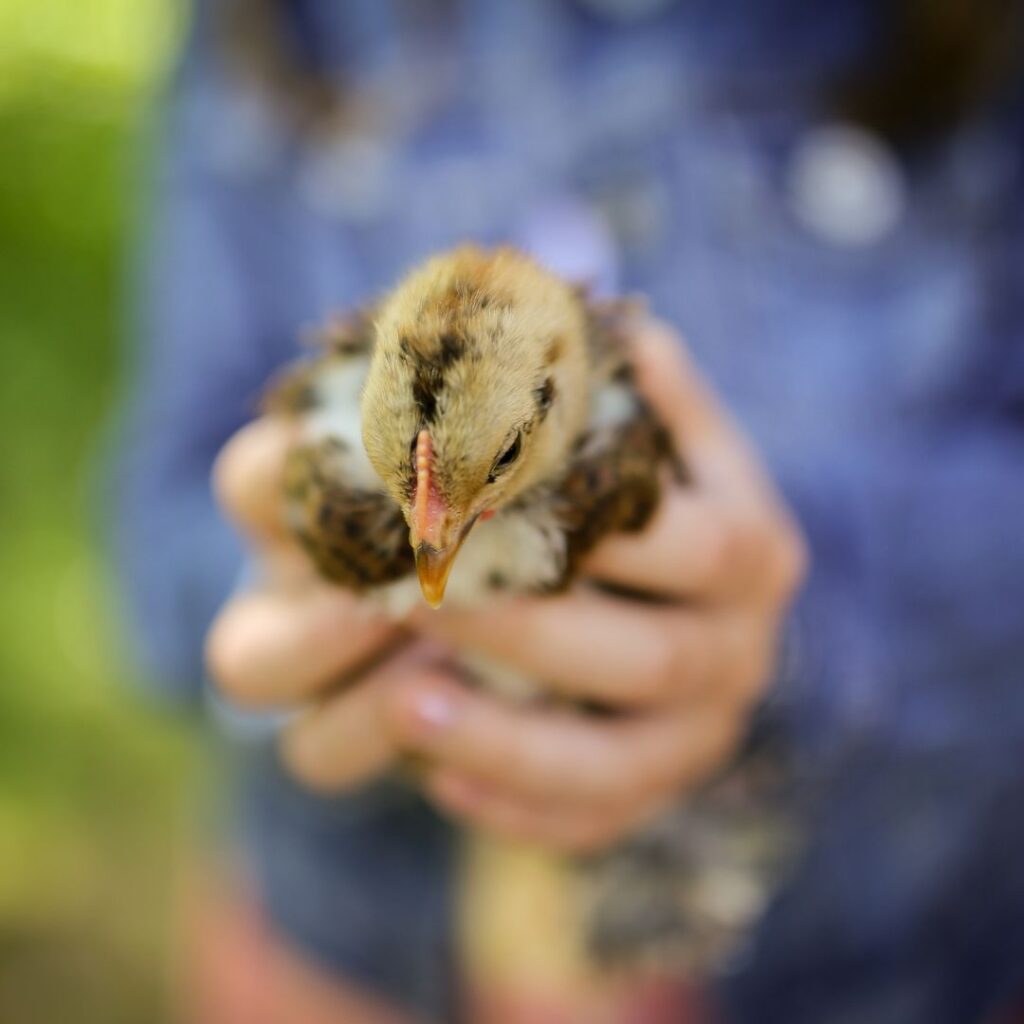
Are Chickens Easy to Take Care Of
If you’re thinking about raising chickens, yes, they are easy to care for. Chickens need a steady supply of fresh water and food. A regularly cleaned living space and a space to roam. As long as you can provide those things, they will be happy and thrive.
In addition, chickens can be raised in an organic way easily. They don’t require any special conditions or treatments, just changing out commercial feed for organic feed. This combined with plenty of space to roam around and access to fresh food and water.
How to raise chickens
Are you thinking about getting and raising chickens in your backyard? It’s a great idea! Chickens are fun to watch and they provide fresh eggs. But before you can get started, there are some things you need to know.
You’ll need to decide how many chickens you want to have, and what size of space they will have. You also need to consider whether or not you are ready to raise chickens. Raising chickens takes time and effort, but it is worth it!
Once you have decided that raising chickens is right for you, the next step is getting supplies. You’ll need a coop, feeders and waterers, bedding material, food, and medication. Be sure to buy a good quality coop – it will last many years.
Chickens require a healthy diet in order to produce eggs regularly. They also need plenty of fresh water and let’s not forget protection from the elements.
Your chickens may be seen as pets, but not always greeted as pets by other animals. Be sure to keep an eye on your flock and protect them from danger like predators.
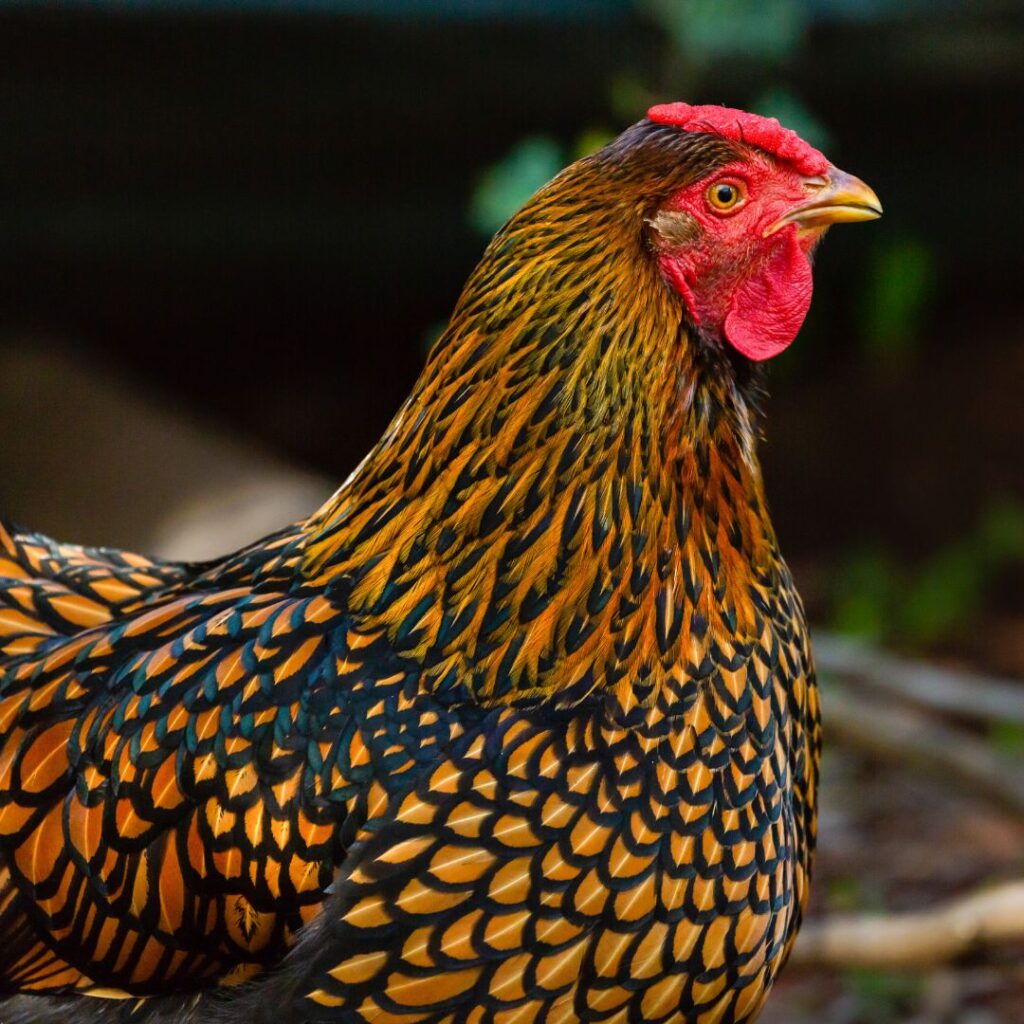
What Are Your Local Laws
Before you even start counting those chickens before they hatch, check your local laws. You can do this by calling your local town or city hall. They will direct you to the correct department.
Many more locations allow raising backyard chickens these days but they have certain guidelines. Be sure to get it all in writing so you don’t end up investing in backyard poultry, only to get fined or worse, having to get rid of all the chickens. Let alone, the expense of the coop will be all for nothing.
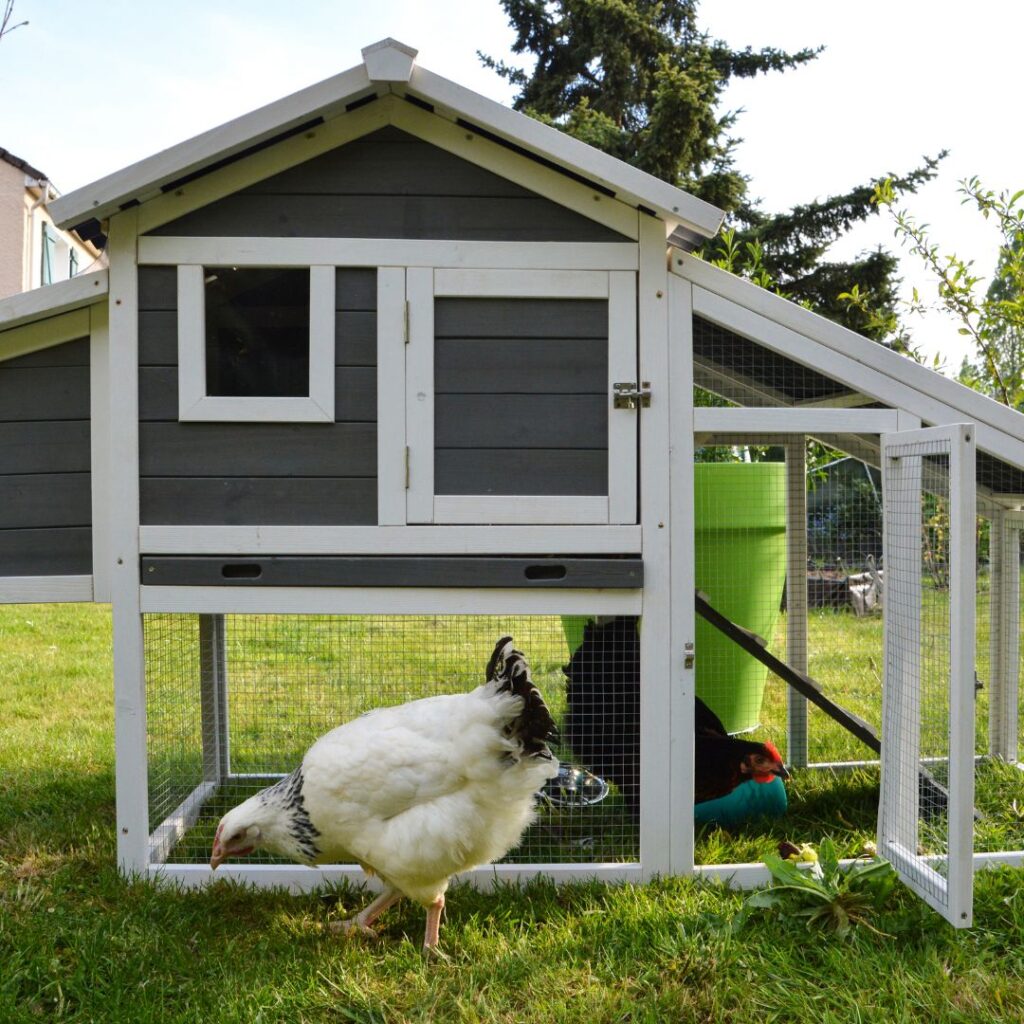
Where do you live
There are a few things to take into account when deciding which chicken breed is best for you. One of the most important factors is climate.
If you live in a colder climate, choose breeds with small combs and heavy feathering. This will help keep them warm during the winter months.
On the other hand, if you live in a hot climate, chickens with large combs and smaller body mass will fare better.
Space at your home
Do you have enough space? As mentioned above, you’ll need approximately 10 square feet per bird. (also take into consideration local rules and laws/by-laws).
Another consideration is your location’s predators. Chickens do well roaming and foraging, but are still predators. They’re not more or less likely to be around whether you live in an urban/ city area or a suburban or country-like area. Be educated and aware of the predators in your area (yes, even dogs can be considered predators).
Don’t forget to take your location to neighbors into consideration. If you live in an urban area, you’ll want to look at quiet chicken breeds.
Choose the chicken breed
When it comes to backyard chickens, there are a few things you need to take into consideration before getting started. One of the most important decisions you’ll make is what breed of chicken to get.
Each breed has its own unique set of characteristics that can make them better or worse suited for your climate and backyard coop setup.
For example, if you live in an area with cold winters, you’ll want to choose chicken breeds that are capable of tolerating colder weather. On the other hand, if you live in a hot climate, you’ll want to choose a chicken breed that is heat-tolerant.
There are many different breeds of chickens available, so it’s important to do your research before making a decision. Checking with your feed store, local hatchery, and even 4H clubs are great resources for reliable advice.
Some popular breeds that are well-suited for backyard chickens include:
- Buff Orpingtons
- Ameraucanas
- Barred Rocks
- Rhode Island Reds
- Jersey Black Giant Chicken
- More of the Friendliest Chicken Breeds
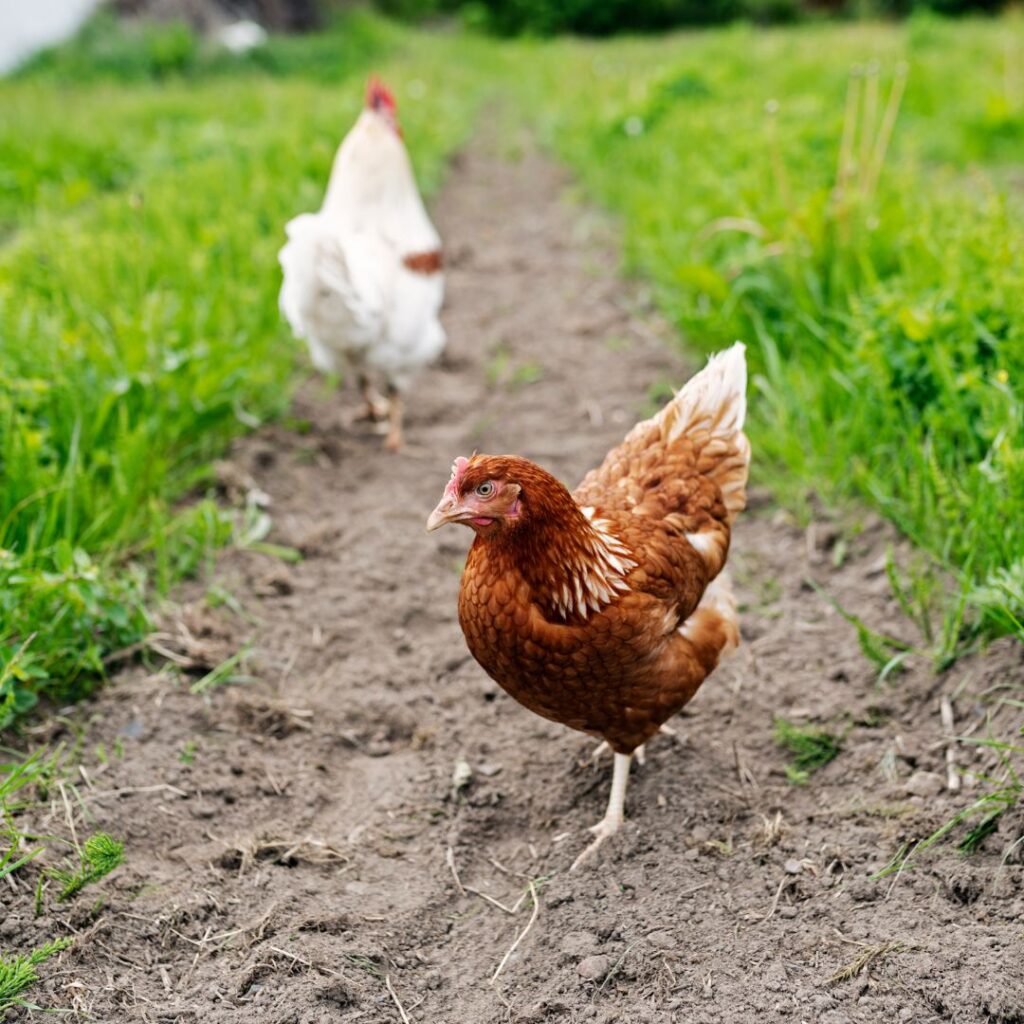
For Show or Pet Only
If you’re raising chickens for pet purposes or for show only, keep in mind you’ll still get eggs from the hens (the females). Many 4H clubs will help you determine where to best start and the breed, where to find a good quality bird, etc.
The most popular 4H Breeds are:
- Australorps
- Brahmas
- Chanteclers
- Cornish
- Cochins
- Dominiques
- Dorkings
- Orpingtons
- Silkies
It’s worth noting, that many hatcheries sell ‘bantams’, which can be smaller versions of the standard breeds. Again, if you’re joining a club, it’s always best to take their advice and guidance.
Chickens For Meat (breeds)
Any bird can be raised or dressed for meat purposes. However, some are raised specifically for meat. These poultry breeds are usually only available as a straight run (meaning you get both male and female) They grow much quicker than other breeds.
Quite honestly we have never kept our meat birds past maturity date and with the growth rate so rapid, we’re not sure they would have been healthy enough to live a regular life expectancy.
The plus side of raising chickens for meat is the taste, and quality and you know you provided a humane living environment for the bird before slaughter. Quality feed means quality meat.
Care properly and compassionately for your flock be it for meat, show, pet, or egg-laying hens and they will provide well for you. It is so important you take great care to keeping chickens healthy these few short weeks they are in your care.
These poultry breeds typically mature around 6 – 9 weeks.
The downside, they grow so fast, these chickens eat enormous amounts of feed compared to dual-purpose or egg-laying hens. They poop (it seems) 10 times more. Because of the large amounts of food, they’re eating and the amount of their dropping, this chicken poop seems to smell way worse than any other.
Their living area needs to be cleaned out frequently. Cleaning the coop regularly is probably not enough. You’ll need to do this much more than a regular backyard coop. Be prepared, this is not the fun part of raising backyard chickens for food.
We’d suggest (almost insist) that you set aside a separate space in your chicken house or have separate chicken coops for meat birds if you plan on doing this.
They won’t be able to be kept in a brooder for long and can’t really be raised properly with other dual-purpose breeds or egg-laying hens.
These birds are not intended for a few fresh eggs, they are strictly for meat purposes.
Popular Breeds for meat Only
- Cornish Game
- Cornish Roaster
- Jumbo Cornish Rock or Jumbo Cornish Cross

Dual Purpose Chicken Breeds (Combination of Egg and Meat)
These birds are great for long-term laying hens just as well as slower growing males for meat (Rooster). They typically mature around 18-22 weeks, which is more within the normal poultry growth cycle.
These breeds can also usually be bought as straight run, or sexed chicks to choose just females (hens) if you are only looking for birds that produce eggs.
These are usually a larger, fairly hardy chicken breed.
Our five favorite dual-purpose breeds are:
Barred Rock (aka Plymouth Rock)
- Dual Purpose: Yes
- Eggs: Medium Brown, 200 – 280 per year
- Free-Range: Yes
- Heat Tolerant: Yes
- Cold Tolerant: Yes
- Meat Production: Yes
- Age til Mature: 20 weeks
- Rooster Weight: 9.5 pounds
- Hen Weight: 7.5 pounds
Buff Orpington
- Dual Purpose:
- Eggs: Large Brown, 200 – 280 eggs per year
- Free-Range: Yes
- Heat Tolerant: Yes
- Cold Tolerant: Yes
- Meat Production: Yes
- Age til Mature: 20 weeks
- Rooster Weight: 10 pounds
- Hen Weight: 8 pounds
The Orpington is a popular chicken breed that can weigh up to 8 pounds. They are cold hardy in places where the temperature dips below freezing and come in many color varieties, such as Lavender Orpington and Buff Orpington.
Orpingtons make great backyard chickens because they are docile, friendly, and have good layers. This is one of our recommended chickens for kids.
Columbian Wyandotte
If you’re looking for a backyard chicken that is both dual-purpose and beautiful, the Wyandotte may be perfect for you! These birds come in a variety of colors, so you can choose the one that best suits your preferences. They are also well suited for small flocks and rugged conditions, making them an excellent choice for anyone who wants to raise chickens at home.
- Eggs: Medium Brown eggs, 180 – 260 per year
- Free-Range: Great
- Heat Tolerant: Yes
- Cold Tolerant: Yes
- Meat Production: Yes
- Age til Mature: 20 weeks
- Rooster Weight: 8.5 Lbs
- Hen Weight: 6.5 Lbs
- Dual Purpose: Yes
Dark Cornish
While this chicken doesn’t have a large egg production capacity, it makes up for it in size and meat quality.
- Dual Purpose:
- Eggs: Large Brown, 150 per year
- Free-Range: Yes
- Heat Tolerant: Yes
- Cold Tolerant: Yes
- Meat Production: Yes
- Age til Mature: 22 weeks
- Rooster Weight: 10 pounds
- Hen Weight: 8 pounds
Speckled Sussex
- Dual Purpose: Yes
- Eggs: Large Brown, 180 – 240 per year
- Free-Range: Yes
- Heat Tolerant: Yes
- Cold Tolerant: Yes
- Meat Production: Yes
- Age til Mature: 20 weeks
- Rooster Weight: 9 pounds
- Hen Weight: 7 pounds
Read more about the Speckled Sussex chicken here.
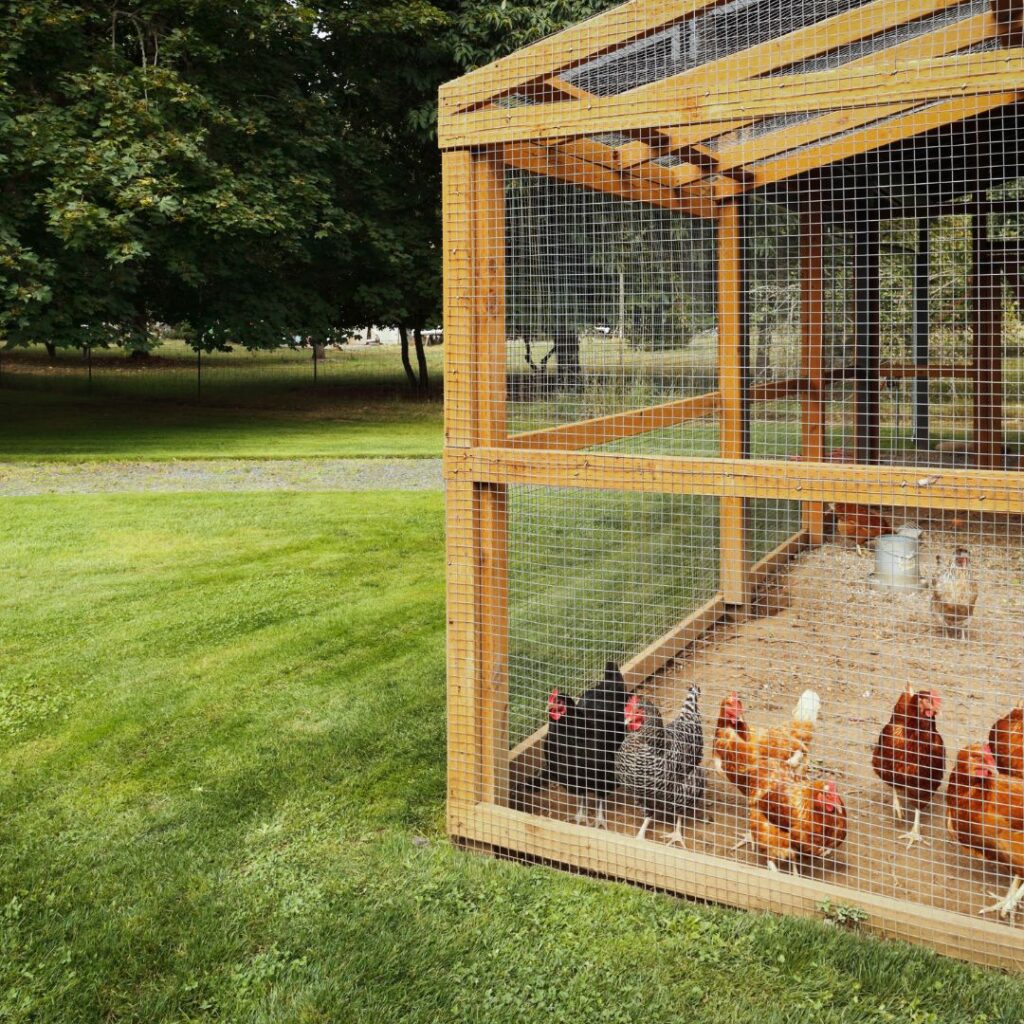
4 Hens For Egg Production
So you’ve decided healthier eggs are your primary goal for your backyard birds. Here are our top picks for you to look over.
Ameraucana
If you’re looking for a chicken that lays bluish, the Ameraucana is a great choice. They are also easy to manage, making them a good option for beginners. Their egg production is decent for colored egg-laying hens.
- Eggs: Large Blue, bluish-green eggs, 180 – 200 per year
- Free-Range: Yes
- Heat Tolerant: Yes
- Cold Tolerant: Yes
- Meat Production: Yes
- Age til Mature: 22 weeks
- Rooster Weight: 7 pounds
- Hen Weight: 4 pounds
Rhode Island Red
The Rhode Island Red is a breed of chicken that is popular for laying many eggs. There are many different breeds of chickens available to the public, and the Rhode Island Red is a good option for those looking into raising hens that produce a good amount.
- Eggs: Large Brown, 200 – 280 eggs per year
- Free-Range: Yes
- Heat Tolerant: Yes
- Cold Tolerant: Yes
- Meat Production: Yes
- Age til Mature: 19 weeks
- Rooster Weight: 8.5 pounds
- Hen Weight: 6.5 pounds
Australorps
- Eggs: Large Brown Eggs, 200 – 280 per year
- Free-Range: Yes
- Heat Tolerant: Yes
- Cold Tolerant: Yes
- Meat Production: Yes
- Age til Mature: 20 weeks
- Rooster Weight: 8 pounds
- Hen Weight: 5 1/2 pounds
Pearl White Leghorn
- Eggs: Large White, 220 – 300 per year
- Free-Range: Yes
- Heat Tolerant: Yes
- Cold Tolerant: Yes
- Meat Production: Yes
- Age til Mature: 16 – 18 weeks
- Rooster Weight: 6 pounds
- Hen Weight: 4 1/2 pounds
- All about the Leghorn is in this link.
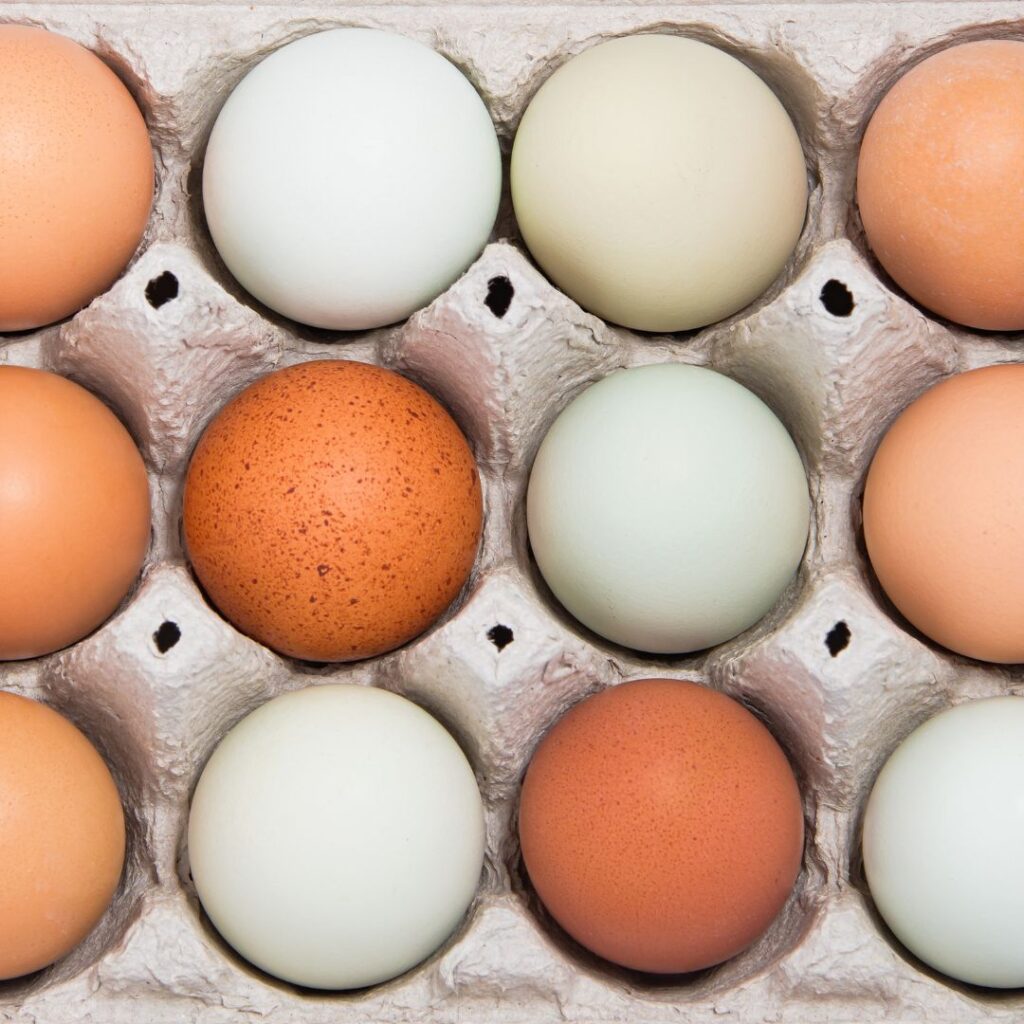
Learn about why chickens stop laying eggs here.
Baby chicks or adults for your new backyard chickens
When you’re first starting out to raise backyard chickens, the first decision you need to make is whether you want to start with raising chicks or start with raising chickens that are grown. Yes, there is always the option to hatch your own eggs!
There are some benefits to buying an adult bird. A reputable breeder/ owner will let you know if the hen is laying, and the age, so you have a good idea of the time you have left with full production years.
Learn more about the life expectancy of chickens here.
Another Blue Egg Layer to Learn About: Araucana Chickens
You save the time, work, and money raising chicks from baby chicks.
Choose where they should live
Choosing a brooder
When you bring home your chicks, you will need to provide them a brooder. The brooder must be kept indoors and it is essential that the lighting is adequate, as this will ensure that the chicks are able to thrive at an ideal temperature.
Your baby/ young chickens will need to stay in this area until they begin to feather. You can move them to a closed-off section of the main coop after this and keep them there until fully feathered (as long as the coop area is warm enough).
Choosing a chicken coop
When choosing your chicken’s housing, there are many factors to consider. The most important question is where will the coop location be? Pick a place you can live in the long term if you’re constructing a shed-like coop. Someplace close to water source, electricity, and you are able to see from your home. In general, you want your coop easily accessible.
Chicken coops are a long-term investment that will secure your chickens for many years to come. If you are handy, you can build your own coop from scratch.
However, if you don’t have the necessary skills or time, there are many pre-made options available.
One thing to keep in mind is not all pre-made chicken coops include nesting boxes. You’ll want to buy or build one before your chicken reaches maturity and starts laying eggs.
Protect Against Heat and Cold
There are many things you can do to protect your flock from the weather. In hot weather, provide them with a shady spot to relax in and make sure they always have access to fresh water.
In order to keep your flock safe from the cold, there are a few things you can do. For example, you can install a heated waterer, make sure the coop is free of drafts, practice the deep litter method, and more. Read our complete article on Chicken care in the winter here.
Frostbite prevention techniques like applying petroleum jelly or paw wax to exposed skin should be used during the winter months.
It’s also important to be aware of your chickens’ health during all seasons. Keep an eye out for signs of illness or injury, and contact a veterinarian if you need help.
There are many different breeds of chickens that are suitable for backyard chicken farming. If you’re just starting out, it’s best to choose a breed that is hardy to your part of the country.
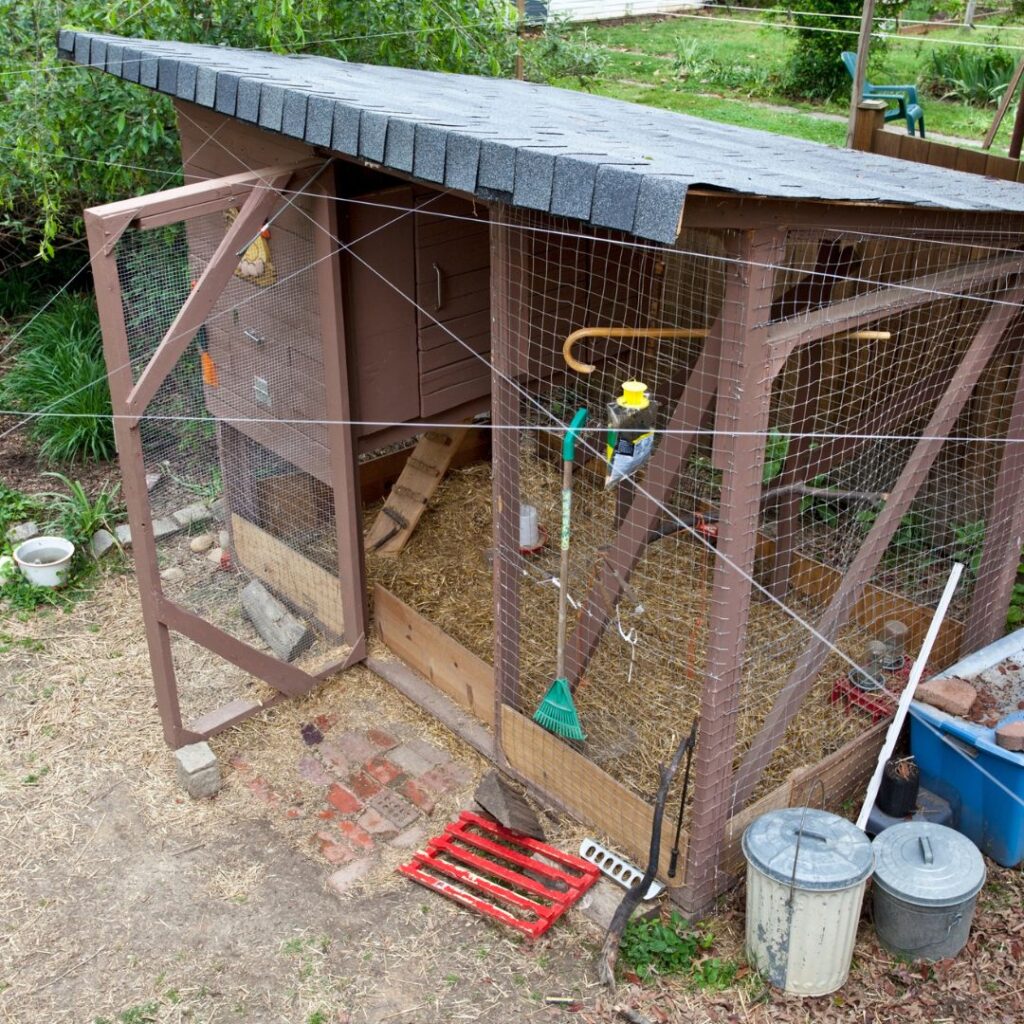
Protect against predators
One of the main things you need to worry about when raising chickens is predators. Predators can access your chickens from the top, so be sure to protect them by fencing off your yard and covering any potential entrances predators could use. Chicken wire can be a great option for keeping chickens safe.
Predators in your area could include coyotes, bobcats, hawks, raccoons, weasels, even dogs, and more. Make sure you are aware of what predators live in your area and take steps to keep chickens safe.
How to take care of chickens
There are a few things you need to do in order to take care of your chickens.
- First, it’s important that you create a routine and stick to it. This will help you care for them efficiently.
- Second, make sure you monitor the feeding and watering during the day so that your chickens stay healthy.
- Third, be sure to check on your flock twice a day – once in the morning and once in the afternoon – to collect eggs in time for breakfast or lunch.
- And fourth, give your chickens treats or attention throughout the day so they get friendlier.
- In addition, chickens need access to fresh air each afternoon, so be sure to let them outside into their designated area.
- They need a run area, if they’re not free-roaming, they’ll need a space protected, with wire fencing or doors that allow them to come and go as they please. Just remember to supervise them while they’re out!
- Finally, before bedtime make sure you lock all your chickens up in their coop safely; do a quick headcount just to be safe!
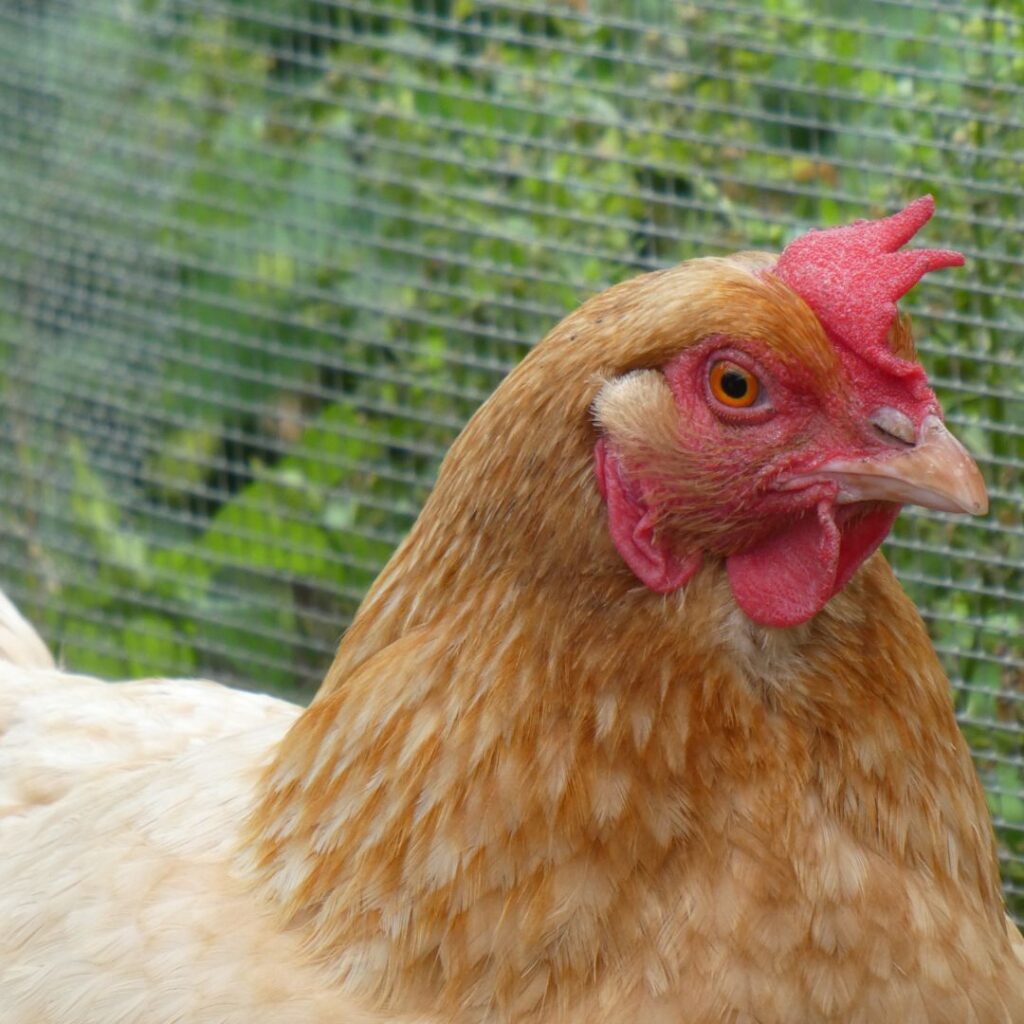
Keep the chicken coop clean
The chicken coop needs to be kept clean in order to prevent the spread of diseases and maintain a sanitary environment for your chickens. This means that you should regularly replace the beddings in the coop, as well as wash all surfaces down with a hose on a regular basis.
Winter cleaning should be done weekly. This is because your flock is most likely spending more time inside the chicken coop.
Weekly is a must if you are using the deep litter method. This does not involve removing litter, you turn litter, then add a layer of straw to top. This will allow the coop to maintain warmth as well as provide conditions for manure to decompose.
Removing litter/ bedding and turning in a compost pile until it is fully decomposed is best practice. Usually over a winter is enough time before spreading in gardens and even flower beds for natural fertilizer.
Nest boxes For when Your Hens Lay Eggs
Nest boxes are an important part of any backyard chicken coop. They provide a safe, private, and cozy space for the hens to lay. The cushioned bottom of the nest box prevents eggs from being damaged.
You’ll want to have no less than 1 nesting boxes for each 3-5 hens. Don’t go overboard with nesting boxes for each individual hen. They usually pick one or two they prefer.
Don’t be surprised to find more eggs or even all your eggs in the same nest box some days. As long as you provide one nest box per 3-5 chickens you’ll satisfy their needs.
Think of nesting boxes as safe square cubes with tops and sides (open in front). We recommend going with the larger size so it can accommodate your small, standard, and large breeds. A 12 x 12 nesting box will be just perfect.
It’s helpful to encourage your hens to start laying in these spaces. Some chicken owners use golf balls, many get the ‘fake eggs’ for this purpose. They’ve got great reviews and success in encouraging the hen to lay in their nesting boxes.
Feeding Your Backyard Chickens
Food
The feed you will give your flock partly depend on the breed/type of the chicken as well as their age. Provide food to your chickens that are considered complete and balanced.
New chicks eat a chick starter feed, meat birds require higher protein, egg layer chickens have their own nutritional needs when laying, and then again that changes when molting. Talk with your local farm supply/ feed store and they will guide you on the right chicken feed.
They will also let you know the availability of commercial feeds and increasingly popular organic feeds.
If you’re raising chickens in your backyard, it’s important to know how to feed them properly. What they eat has a direct impact on the meat or eggs they provide to you.
Scratch and Treats for your Backyard Flock
Treats are recommended in portions of 10% treat to 90% feed.
When it comes to raising backyard chickens, there are a few things you need to provide them with in order for them to be healthy and happy. Giving them scratch grains is more for exercise, entertainment, and plays to their natural foraging abilities.
It’s always a good idea to keep a bag of scratch on hand. It’s a great way to encourage scratching, which relieves boredom and some stress or coop conflicts.
Fun treats can be tossed in the run, foraged for (insects), and even hung up indoors or out. We like the treat balls, especially in the winter months. We also like how it keeps the vegetable scraps off the ground. There are also chicken treat bags. You can make your own too.
Feeders and Waterers
Make sure you have a large enough feeder or multiple feeders depending on the size of your flock. Also, be sure to keep these clean. It’s best to either elevate these or hang them slightly above the floor. This is to discourage chickens from trying to feed from the top and getting food dirty.
Waterers should also be elevated or hung to prevent the soiling of the water. As with the feeders we suggest you have either multiple waterers or be sure yours is large enough to accommodate your flock size. Water should be kept plentiful and fresh at all times.
If you live in a part of the country where temperatures get below freezing, you will want to invest in a bowl warmer (be sure it’s compatible with your waterer for safety reasons) or a heated waterer. In our winter care article, we suggest these two as options. This one is a 2-gallon heated waterer and accommodates up to 15 chickens. This one here is a 3-gallon and accommodates up to 35 adult hens. We also the fact that the 3 gallon has a detachable cord for year-round use.
Hens don’t lay eggs forever.
Hens usually start laying eggs at 16-20 weeks old. After a while, they will lay eggs at a certain rate for a while, but eventually, they will slow down and stop altogether after 5-6 years. This is why it’s important to phase in new birds so that there are always young hens to keep production up. Read more about how long chickens lay and life expectancy here.
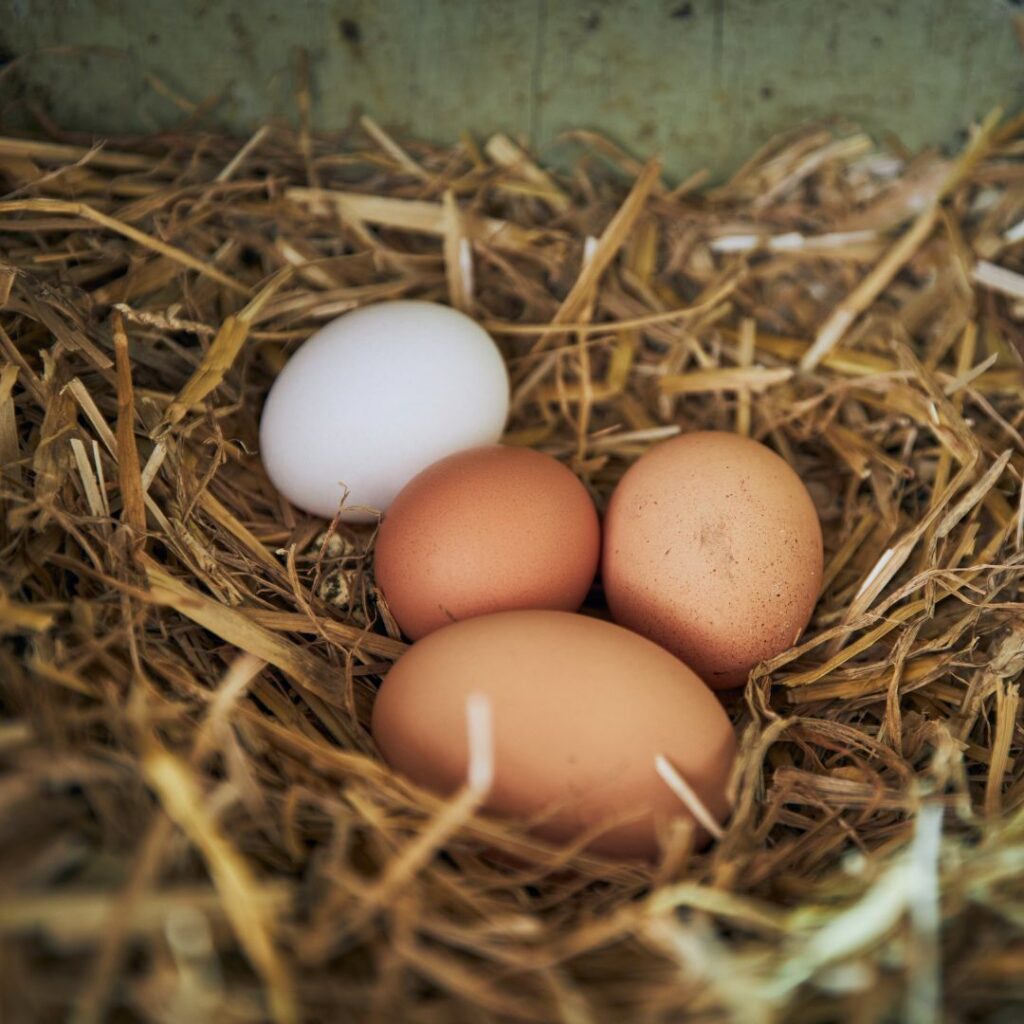
Egg laying can be seasonal.
Most hens lay throughout the winter, however much less than in the spring and summer months.
Backyard chicken owners are probably aware that production can be seasonal. In fact, many chickens almost completely stop laying eggs altogether in winter.
This is due to the decrease in daylight hours and the colder temperatures. Read more on how to help your hens lay eggs year-round in this link.
Collecting Eggs; To Clean Eggs or Not
Hens will lay eggs starting around 16-20 weeks, so be prepared. You want to be watching for them to start as well as once they do, collecting eggs daily. We suggest checking nesting box areas as well as the coop floor until they get the hang of laying in the boxes.
How many chickens you have determines how many eggs you’re hunting for. Watch where you step in the early days.
If you’re eating these at home, using them for yourself, then fresh eggs should not be washed until you plan on using them. Eggs can maintain better quality and freshness when unwashed and even unrefrigerated! They have a protected layer called a bloom around the egg’s surface that protects it.
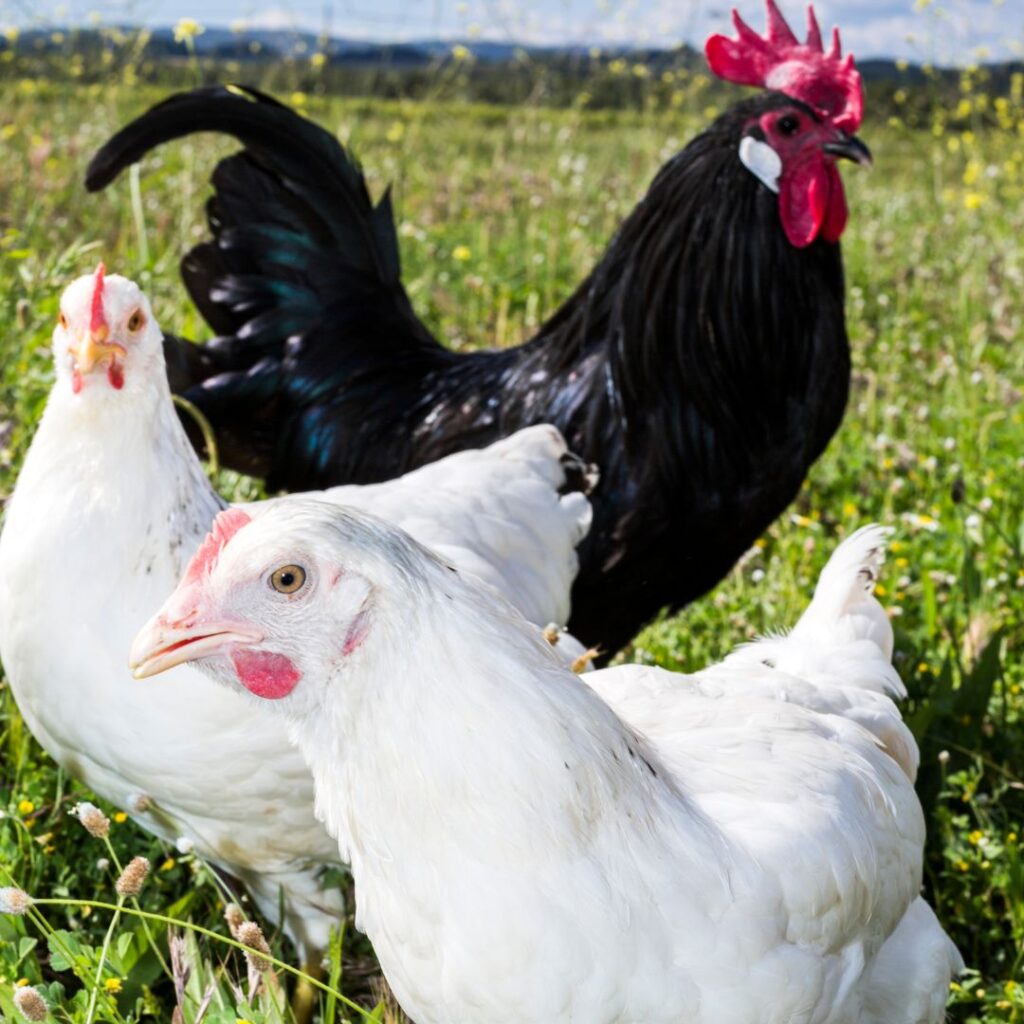
Chickens Need More Chickens
Chickens are flock animals and need other chickens to be happy and healthy. If a chicken is separated from the flock, it may become stressed or anxious.
It’s important to introduce new hens into the flock in twos or threes so that they can socialize and form bonds. A flock should have at least three chickens in order to protect against social hierarchies.
Multiple hens/chickens are also important to their warmth in cold temperatures.
Read About A Couple of Bantam Breeds That Are Perfect For A Small Hobby Flock; Mille Fleur D’Uccle Bantams Here or the Sebright Bantams Here.
Conclusion
We hope you were able to find some valuable or new information in our tips for raising backyard chickens. As new chicken owners across the country increase, you’ll start to see more and more support resources in places online, in local clubs, etc.
We’re sure you’re going to enjoy many years of your chickens from younger birds on up to adult hen and rooster age. Your first chickens are always the most rewarding and exciting. They are so much fun and have so much to give back.
Keeping chickens healthy, well cared for, and happy isn’t all that hard once you get started and have a routine. Whether you are doing this for your own eggs or to enjoy watching the chickens roam around your yard for relaxation or play in their chicken run, the key is consistency. Food, Water, Safety checks, and Secure Shelter.
Most chicken owners rave about the benefits of decreased insect population, organic fertilizer for your garden, fresh healthy eggs, and meat are all part of the benefits of owning chickens and raising them in your own backyard.




Pingback: How To Clean & Store Fresh Eggs From Backyard Chickens - Gilmore's
Pingback: How To Attract Hummingbirds To Your Yard in 2022 - Gilmore's
Pingback: Chicken Care In Winter Months; Warmth & Health Of Flock - Gilmore's